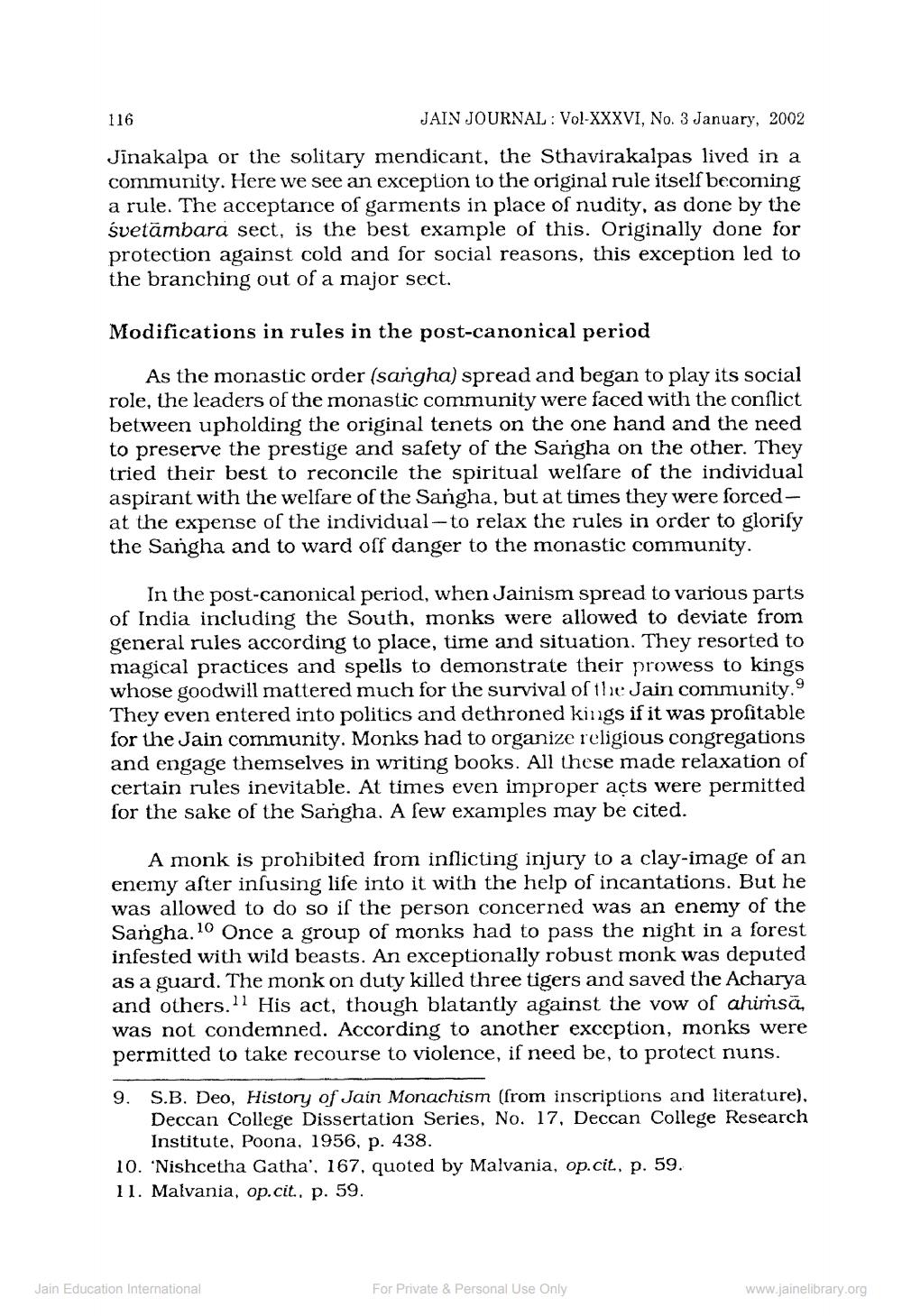________________
JAIN JOURNAL: Vol-XXXVI, No. 3 January, 2002 Jinakalpa or the solitary mendicant, the Sthavirakalpas lived in a community. Here we see an exception to the original rule itself becoming a rule. The acceptance of garments in place of nudity, as done by the svetambara sect, is the best example of this. Originally done for protection against cold and for social reasons, this exception led to the branching out of a major sect.
116
Modifications in rules in the post-canonical period
As the monastic order (sangha) spread and began to play its social role, the leaders of the monastic community were faced with the conflict between upholding the original tenets on the one hand and the need to preserve the prestige and safety of the Sangha on the other. They tried their best to reconcile the spiritual welfare of the individual aspirant with the welfare of the Sangha, but at times they were forcedat the expense of the individual-to relax the rules in order to glorify the Sangha and to ward off danger to the monastic community.
In the post-canonical period, when Jainism spread to various parts of India including the South, monks were allowed to deviate from general rules according to place, time and situation. They resorted to magical practices and spells to demonstrate their prowess to kings whose goodwill mattered much for the survival of the Jain community.9 They even entered into politics and dethroned kings if it was profitable for the Jain community. Monks had to organize religious congregations and engage themselves in writing books. All these made relaxation of certain rules inevitable. At times even improper acts were permitted for the sake of the Sangha. A few examples may be cited.
A monk is prohibited from inflicting injury to a clay-image of an enemy after infusing life into it with the help of incantations. But he was allowed to do so if the person concerned was an enemy of the Sangha. 10 Once a group of monks had to pass the night in a forest infested with wild beasts. An exceptionally robust monk was deputed as a guard. The monk on duty killed three tigers and saved the Acharya and others. His act, though blatantly against the vow of ahimsā, was not condemned. According to another exception, monks were permitted to take recourse to violence, if need be, to protect nuns.
9. S.B. Deo, History of Jain Monachism (from inscriptions and literature). Deccan College Dissertation Series, No. 17, Deccan College Research Institute, Poona, 1956, p. 438.
10. Nishcetha Gatha', 167, quoted by Malvania, op. cit., p. 59. 11. Malvania, op. cit., p. 59.
Jain Education International
For Private & Personal Use Only
www.jainelibrary.org




